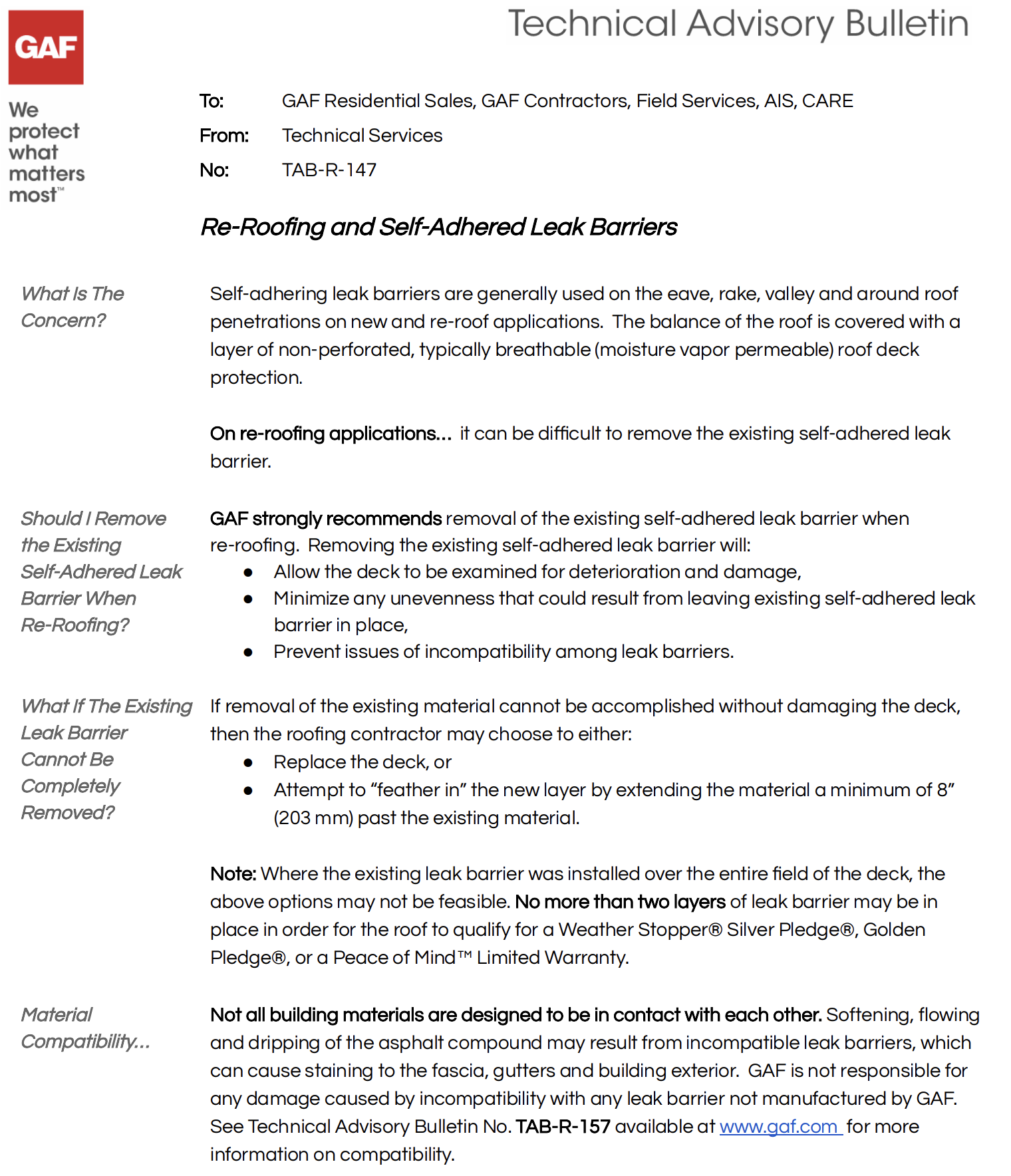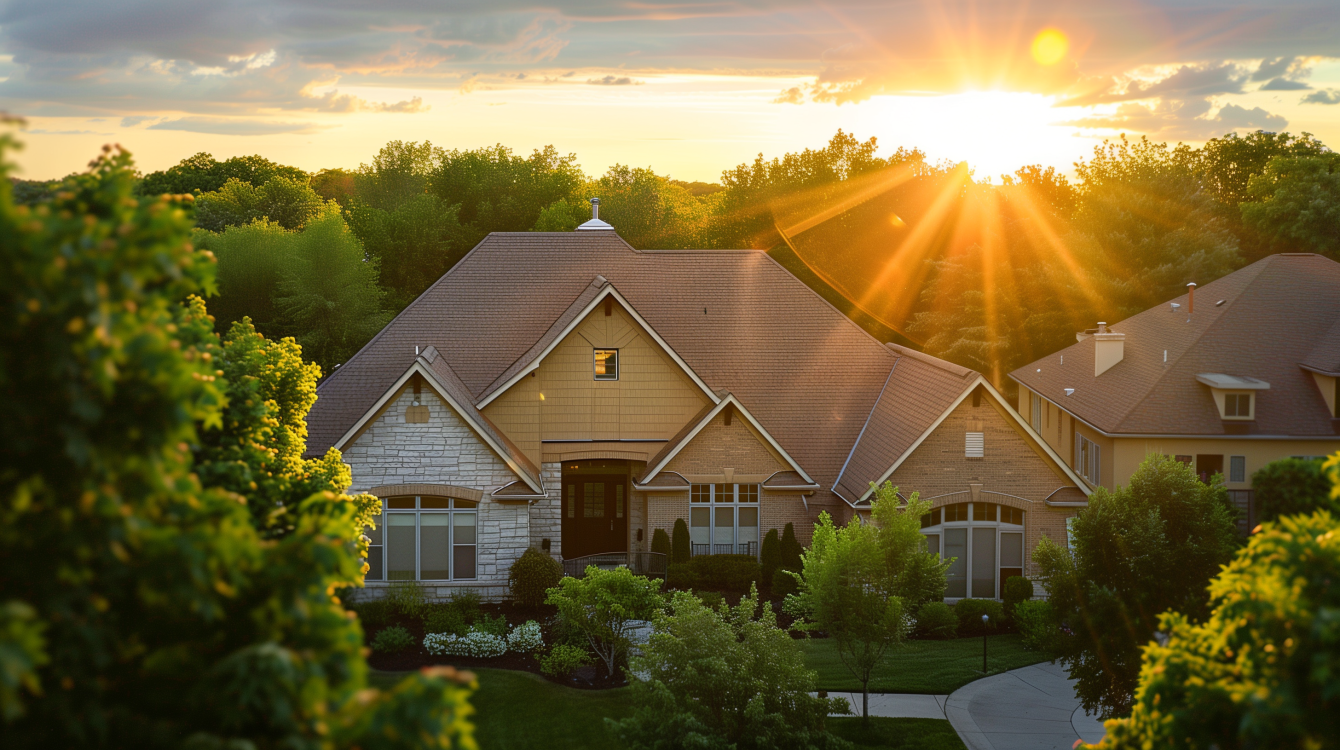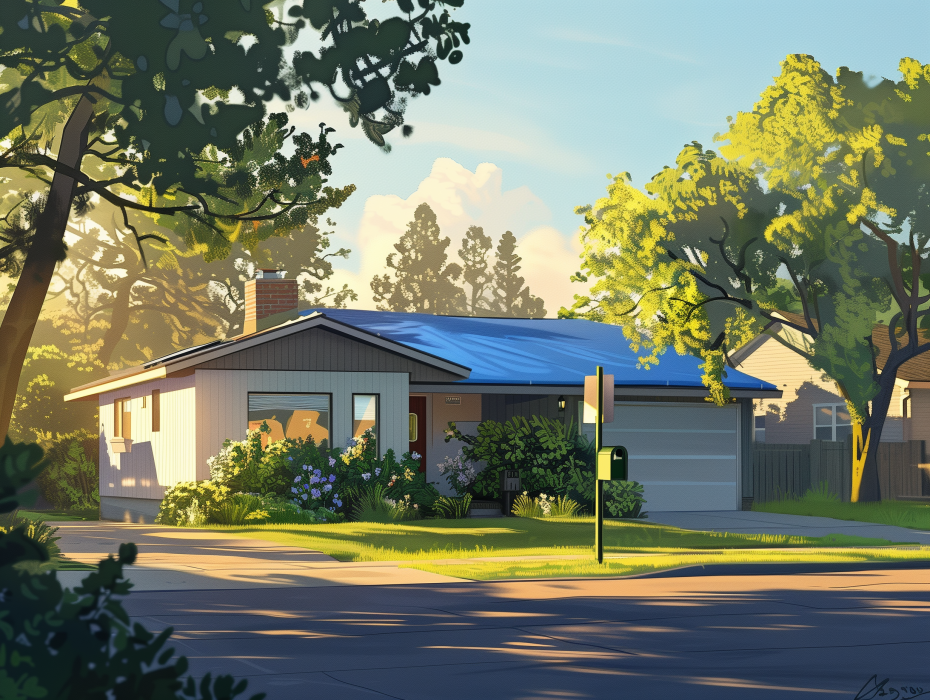What Are Self-Adhered Leak Barriers?
Self-adhering leak barriers are used on various parts of the roof, including the eave, rake, valley, and around roof penetrations. These barriers are critical in both new and re-roof applications to prevent leaks. The remainder of the roof is typically covered with non-perforated, breathable (moisture vapor permeable) roof deck protection.
Concern in Re-Roofing Applications
In re-roofing applications, removing the existing self-adhered leak barrier can be challenging. However, it is important to address this issue properly to ensure the new roof’s longevity and effectiveness.
Should I Remove the Existing Self-Adhered Leak Barrier When Re-Roofing?
GAF strongly recommends removing the existing self-adhered leak barrier when re-roofing. Here are the benefits of removal:
- Deck Examination: Allows for a thorough inspection of the deck for deterioration and damage.
- Minimizing Unevenness: Prevents unevenness that can result from leaving the existing leak barrier in place.
- Compatibility Issues: Avoids potential issues of incompatibility among different leak barriers.
What If the Existing Leak Barrier Cannot Be Completely Removed?
If removing the existing leak barrier would damage the deck, the roofing contractor has two options:
- Replace the Deck: This is often the best long-term solution, ensuring a smooth and secure foundation for the new roof.
- Feather in the New Layer: Extend the new leak barrier material a minimum of 8 inches (203 mm) past the existing material to ensure proper coverage and adhesion.
Note: If the existing leak barrier covers the entire field of the deck, these options might not be feasible. To qualify for GAF’s Weather Stopper® Silver Pledge®, Golden Pledge®, or Peace of Mind™ Limited Warranty, no more than two layers of leak barrier can be in place.
Material Compatibility
Not all building materials are compatible with each other. Incompatibility among leak barriers can cause issues such as the softening, flowing, and dripping of the asphalt compound, leading to staining of the fascia, gutters, and building exterior. GAF is not responsible for damage caused by incompatibility with non-GAF leak barriers. For more information on material compatibility, refer to Technical Advisory Bulletin No. TAB-R-157.
Conclusion
Proper handling of self-adhered leak barriers during re-roofing is crucial for ensuring the new roof’s performance and longevity. By following GAF’s recommendations, homeowners can prevent potential issues and maintain the integrity of their roofing system.
For Immediate Service or Consultation
Contact Allied Emergency Services, INC.
Phone: 1-800-792-0212
Email: Info@AlliedEmergencyServices.com
Location: Serving Illinois, Wisconsin, and Indiana with a focus on the greater Chicago area.
If you require immediate assistance or have specific questions, our human support is readily available to help you.
Disclaimer: This article is intended for informational purposes only. For professional advice, consult experts in the field.










